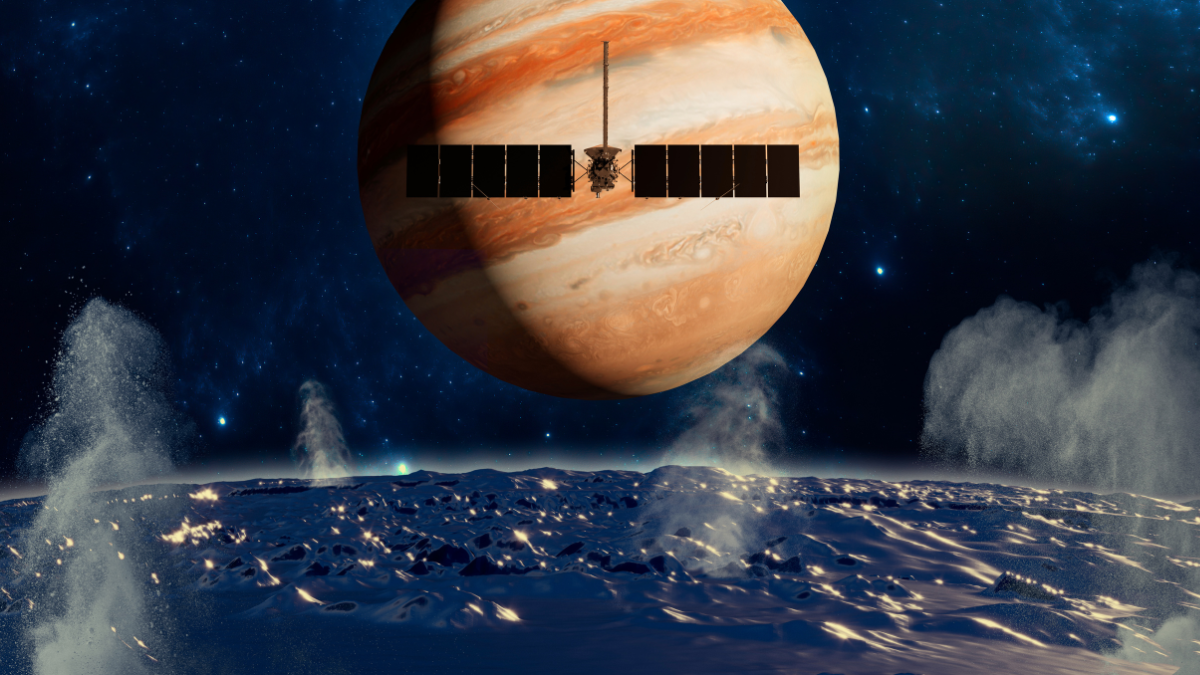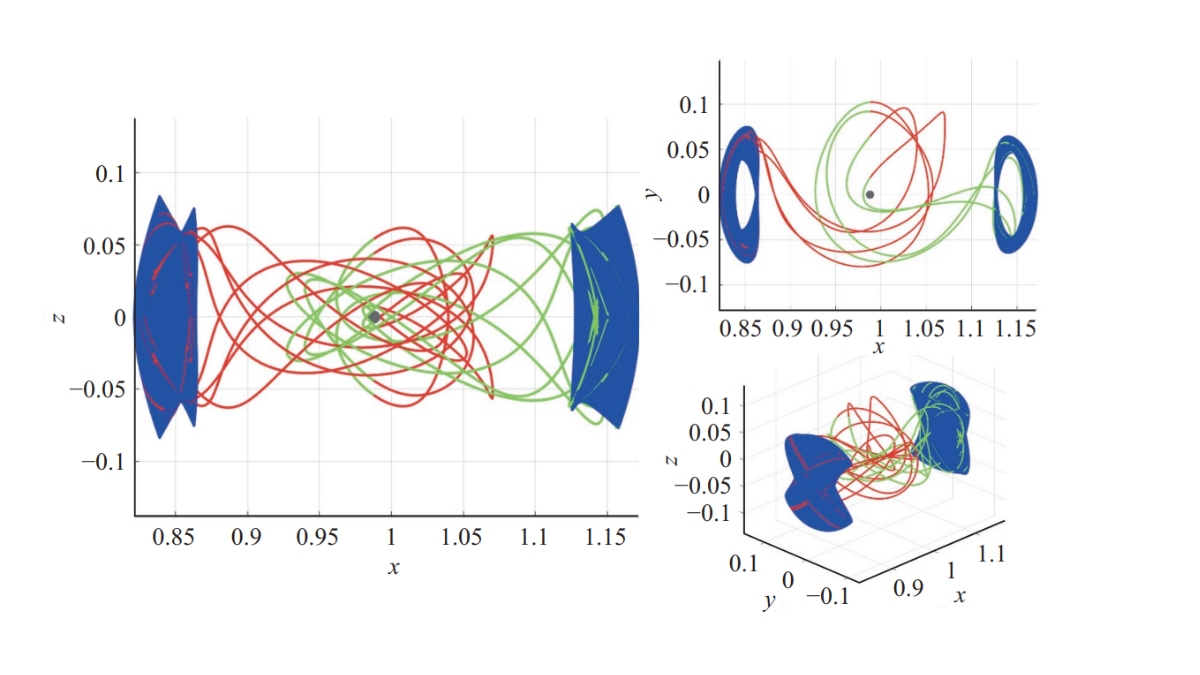New technique uses knot theory to create a ‘tube map’ around planets and moons
Just as sat-nav did away with the need to argue over the best route home, scientists from the Surrey Space Centre have developed a new method to find the optimal routes for future space missions without the need to waste fuel.

The new method uses mathematics to reveal all possible routes from one orbit to another without guesswork or using enormous computer power.
In recent decades, space missions have increasingly relied on the ability to change the course of a satellite’s path through space without using fuel.
One way of doing this is to find ‘heteroclinic connections’ - the paths that allow spacecraft to transfer from one orbit to another without using fuel.
The mathematics for finding these paths is complex – usually calculated by using vast computing power to churn through one option after another or by making an ‘intelligent guess’ and then investigating it further.
This new technique uses an area of maths called knot theory to quickly generate rough trajectories – which can then be refined. By doing so, space agencies can gain a full list of all possible routes from a designated orbit. They can then choose the one that best suits their mission – much as you might choose a route by studying the tube map.
These diagrams show a set of possible routes a spacecraft could take between different regions near to the Moon, discovered using the Surrey Space Centre's new technique.

The technique was tested successfully on various planetary systems - including the Moon, and the Galilean moons of Jupiter. Both of these are the focus of current and future missions.
The paper is published in the journal Astrodynamics.
Related sustainable development goals

Featured Academics
Media Contacts
External Communications and PR team
Phone: +44 (0)1483 684380 / 688914 / 684378
Email: mediarelations@surrey.ac.uk
Out of hours: +44 (0)7773 479911
